- Unit29 Apr 2013
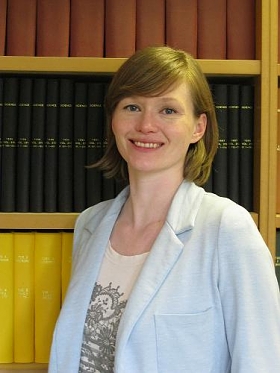
Claire graduated from the University of Bristol, UK with a BSc (Hons) in Neuroscience in 2006. As part of her undergraduate degree she spent a year working in Singapore at GSK's Centre for Research in Cognitive and Neurodegenerative Disorders developing preclinical models to evaluate cognitive enhancing compounds. Her interest in learning and memory continued into her PhD where she studied neurone ensembles during behaviour at the MRC Centre for Synaptic Plasticity.
Under the supervision of Juan Mena-Segovia, and in collaboration with Todor Gerdjikov, Claire joins the basal ganglia group to study the cholinergic modulation of the basal ganglia during reward using optogenetics.
- Unit29 Apr 2013
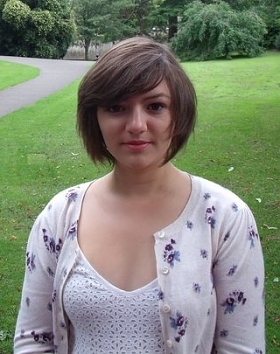
Sophie Avery has joined the Unit to complete the second lab rotation of her M.Sc. in Neuroscience at the University of Oxford. Sophie will work in the group of Pete Magill, with the broad aim of elucidating the dopamine dependence of activity in the external globus pallidus. Sophie graduated from Oxford last year with a BA in Physiological Sciences, and her past research experience includes computational studies of biased decision-making in humans as well as in vitro electrophysiological analyses of GABAA receptor dynamics in hippocampal neurons.
- Unit9 Apr 2013
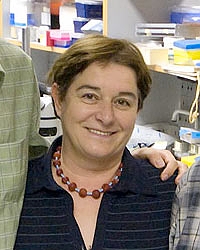
We are pleased to welcome back Klara Peto from St Istvan University, Budapest, Hungary for a return visit for ongoing collaborative work in Professor Somogyi's lab.
http://www.univet.hu/
- Unit8 Apr 2013

We are pleased to welcome Lisa Topolnik as a short-term academic visitor to Professor Peter Somogyi’s lab. During her time in the lab she will collaborate with the group on the synaptic connections of hippocampal interneurons in the mouse. Dr Topolnik is an internationally recognised expert on synaptic pharmacology and plasticity and will also interact with Karri Lamsa.
Lisa holds a tenure-track position in Biophotonics at the Department of Biochemistry, Microbiology and Bioinformatics at Université Laval. She graduated from the Odessa National University in the field of Human and Animal Physiology and received her PhD in the field of Neurobiology from the Bogomoletz Institute of Physiology (2000) in Ukraine. She then moved to Canada to pursue postdoctoral training, first, with the group of Dr. Mircea Steriade at Université Laval and, second, with Dr. Jean-Claude Lacaille at Université de Montréal. In 2007, she moved back to Université Laval and received the University Faculty Award for Women from Natural Sciences and Engineering Research Council of Canada to develop her research program.
http://www.neuronimaging.ca/people.html
- External25 Mar 2013
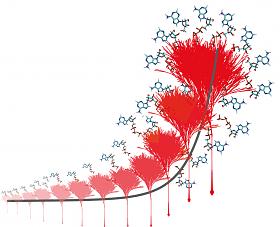
Eleftheria Pissadaki and Paul Bolam addressed, in the latest issue of Frontiers in Computational Neuroscience, the question why dopamine neurons of the substantia nigra pars compacta are paricularly sensitive to degeneration in Parkinson's disease and its models (further discussion in Movement Disorders). We hypothesize that their massive, unmyelinated axonal arbour that is orders of magnitude larger than other neuronal types, puts them under such a high energy demand that any stressor that perturbs energy production leads to energy demand exceeding supply and subsequent cell death. A prediction of this is that susceptible dopamine neurons will have a higher energy demand than less susceptible dopamine neurons. Our approach to this prediction was theoretical. By creating a biophysical compartmental model of SNc dopamine neurons, we examined the energetic impact of their extensive, unmyelinated axonal arbour. Our main findings show that the energy demand associated with action potential conduction is related, in a supra-linear fashion, to the axonal size and complexity. Our results also suggest that the axons of the SNc dopamine neurons may serve as a third physical site, in addition to the soma and the dendrites, for generating oscillatory behaviour. We showed that synaptic stimulation is necessary to ensure reliable propagation throughout the axonal arbors of neurons with larger axonal arbours and, that besides the considerable energetic cost of calcium currents, their presence augments action potential invasion into the very distal axonal terminals. Our model predicts that action potentials at the axonal endings are metabolically inefficient which may contribute to the loss of striatal terminals occurring in animal models of PD. Our data thus suggest that SNc dopamine neurons, particularly in humans, whose axons we estimate to give rise to more than 1 million synapses and have a total length exceeding 4 m, are at a distinct disadvantage with respect to energy balance which may be a factor in their selective vulnerability in PD.
- Unit14 Mar 2013

Members of the Magill and Bolam Basal Ganglia Labs attended the 11th International Basal Ganglia Society Meetings (IBAGS) in Eilat, Israel from the 3rd – 7th March 2013. This is a triennial meeting that brings together all leading groups in the field of basal ganglia research. The meeting consisted of daily symposia and poster sessions.
Pete Magill organised a symposium “Small in Number but Strong in Influence: the cell-type-specific contributions of striatal interneurons to local circuit function and beyond” in which Andrew Sharott gave a lecture "Relationships between the activities of identified striatal interneurons and cortical and thalamic afferents in vivo"
Paul Bolam gave a lecture, “Heterogeneity of the anatomical and physiological properties of thalamostriatal neurons arising in the central lateral and parafascicular nuclei of the thalamus” in a symposium entitled “Anatomy and functions of the thalamostriatal systems”.
Members of the groups presented the following posters:- Federica Vinciati, Andrew Sharott, Kouichi C. Nakamura & Peter J. Magill. "In vivo electrophysiological properties of neurochemically-identified striatal neurons in dopamine-intact and Parkinsonian rats"
- Paul D. Dodson, Stephanie Janezic, Richard Wade-Martins, J. Paul Bolam & Peter J. Magill. "Motor impairment, neurodegeneration and altered in vivo firing properties of dopaminergic neurons in a BAC-transgenic mouse model of Parkinson's disease"
- Kouichi C. Nakamura, Andrew Sharott, Nicolas Mallet & Peter J. Magill. "Neuronal activity in the motor thalamus of dopamine-intact and Parkinsonian rats"
- Maria Alger & J. Paul Bolam. "Glutamatergic input to subthalamic nucleus and dopaminergic neurones of the substantia nigra in the rat"
- Icnelia Huerta-Ocampo, Brita Robertson, Sten Grillner & J. Paul Bolam. "Distribution of dopaminergic, GABAergic and glutamatergic innervation of the lamprey striatum"
- Icnelia Huerta-Ocampo, Juan Mena-Segovia & J. Paul Bolam. "Convergence of cortical and thalamic afferents onto individual direct and indirect medium-sized spiny striatal neurons"
- Cristina Martinez-Gonzalez, Judith van Andel, J Paul Bolam & Juan Mena-Segovia. "Divergent motor projections from the pedunculopontine nucleus are differentially regulated in Parkinsonism"
- Eleftheria K. Pissadaki & J. Paul Bolam. "The energy cost of action potential propagation in dopamine neurons: clues to susceptibility in Parkinson’s disease"
- A. S. Souza, D. Dautan, I. Witten, K. Deisseroth, J. P. Bolam, & J. Mena-Segovia. "Functional characterization of the cholinergic modulation of dopamine neurons in the ventral tegmental area"
- Unit18 Feb 2013
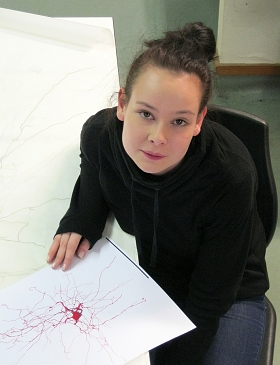
We are delighted to welcome Petra Pavel to the Unit. She is currently a 2nd year medical student from the Medical University of Targu Mures, Romania.
She joins Professor Peter Somogyi’s lab for a short visit working on a project on the axonal and dendritic distribution of physiologically recorded ivy cells, the most numerous GABAergic interneuron in the rat hippocampus.
- Unit11 Feb 2013

We are pleased to welcome Mrs Caroline Etienne to the Unit. Caroline has joined Dr David Dupret’s group for her master internship as an MSc Neuroscience student from the ‘Ecole Normale Superieure’ in Paris. During her time in the Unit she will work with Colin McNamara and contribute to the analysis of hippocampal neuronal circuits using immunohistochemistry techniques and confocal imaging.
- Unit11 Feb 2013
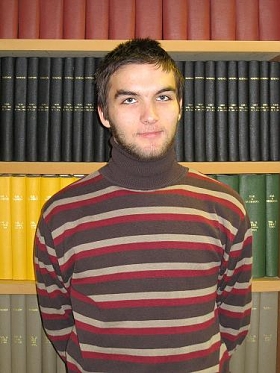
Normal
0false
false
falseEN-GB
X-NONE
X-NONEMicrosoftInternetExplorer4
We are delighted to welcome István Lukács and István Mihály to the Unit. István Lukács was a previous winner of the Oxford Cajal Scholarship scheme and and have entertained us with his fiddle. They are currently 2nd year medical students from the Medical University of Targu Mures, Romania. They join Professor Peter Somogyi’s lab for a short visit working on the project on mouse models of neurodegenerative human brain disorders and carrying out molecular and microscopic analyses on mouse brains.
/* Style Definitions */
table.MsoNormalTable
{mso-style-name:"Table Normal";
mso-tstyle-rowband-size:0;
mso-tstyle-colband-size:0;
mso-style-noshow:yes;
mso-style-priority:99;
mso-style-qformat:yes;
mso-style-parent:"";
mso-padding-alt:0cm 5.4pt 0cm 5.4pt;
mso-para-margin:0cm;
mso-para-margin-bottom:.0001pt;
mso-pagination:widow-orphan;
font-size:11.0pt;
font-family:"Calibri","sans-serif";
mso-ascii-font-family:Calibri;
mso-ascii-theme-font:minor-latin;
mso-fareast-font-family:"Times New Roman";
mso-fareast-theme-font:minor-fareast;
mso-hansi-font-family:Calibri;
mso-hansi-theme-font:minor-latin;
mso-bidi-font-family:"Times New Roman";
mso-bidi-theme-font:minor-bidi;} - Unit4 Feb 2013
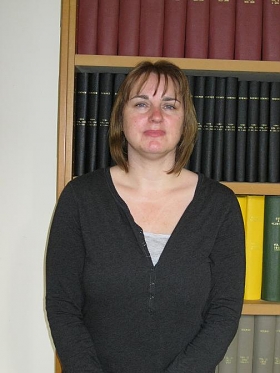
Lisa joined the Basal Ganglia Labs as Research Technician at the beginning of February 2013.
Lisa has many years of experience in different labs both in this University and in other universities across the UK. Her most recent position was at York University where she worked in the teaching laboratories. She also spent seven years working the Natural History Museum here in Oxford.
Lisa will run the Basal Ganglia labs and help in the processing of tissue for Programmes 6 & 7. She will also be providing support to Liz Norman.